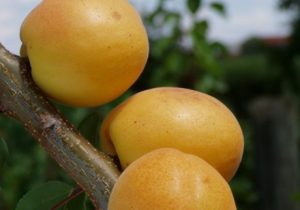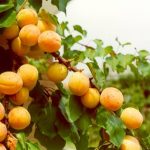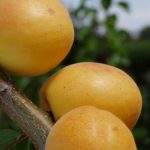
Name
Round Apricot of Costigliole
Seal of quality
Prodotto Agroalimentare Tradizionale (PAT) – Typical Food Farming Product. The procedure has begun for PAT recognition.
Description
The fruit of the Tonda di Costigliole variety is round and medium-sized; the skin is orange-yellow-coloured with reddish marbling; the pulp is yellow-orange-coloured and of a hard consistency. It is sweet and has an intense fragrance. This apricot represents a perfect case of environment/cultivar adaptation. In the alpine area, which presents very difficult conditions for the apricot, the Tonda grows constantly, thanks to both the high tolerance to minimum winter temperatures and the graduated and middle-, late-season bloom, which makes it less exposed to spring frost. The harvesting period is late and quite graduated: it begins around the 21 st July and continues into the first ten days of August.
The Tonda is characterised by its excellent taste characteristics, its juicy pulp and intense fragrance.
Nutritional characteristics
The ripe apricots are extremely sweet and tasty, with a rather high index of repletion. These apricots are an important source of vitamin A and potassium.
| FOOD | unit of measurement | Kiwi |
|---|---|---|
| Edible part | % | 94 |
| Water | g | 86,3 |
| Protein | g | 0,4 |
| Fat | g | 0,1 |
| Carbohydrates | g | 6,8 |
| Starch | g | 0 |
| Soluble sugar | g | 6,8 |
| Total fibre | g | 1,5 |
| Energy | kcal | 28 |
| Kilojoules | 117 | |
| Sodium | mg | 1 |
| Potassium | mg | 320 |
| Iron | mg | 0,5 |
| Calcium | mg | 16 |
| Phosphor | mg | 16 |
| Thiamine | mg | 0,03 |
| Riboflavin | mg | 0,03 |
| Niacin | mg | 0,5 |
| Vit A ret. eq. | mcg | 360 |
| Vit C | mg | 13 |
| Vit E | mg |
Area of production
The Albicocca Tonda di Costigliole grows in the hill belt and in the nearby tablelands that go from Busca to Saluzzo with its centre in the town of Costigliole Saluzzo, from which this variety takes its name.
History
The introduction of the apricot (Prunus Armeniaca) dates back to remote ages. As a token of this, it was given the name in dialect “armugnan”, by which it is still called in the area, and which derives from the medieval d’OC language, indicating the botanical origin of the species.
Although still grown in this region, its growing in specialised orchards goes back to the 50s, when it was concentrated on the hills of the Saluzzo area, thanks to its characteristic micro-climate, favouring the development of the species.


